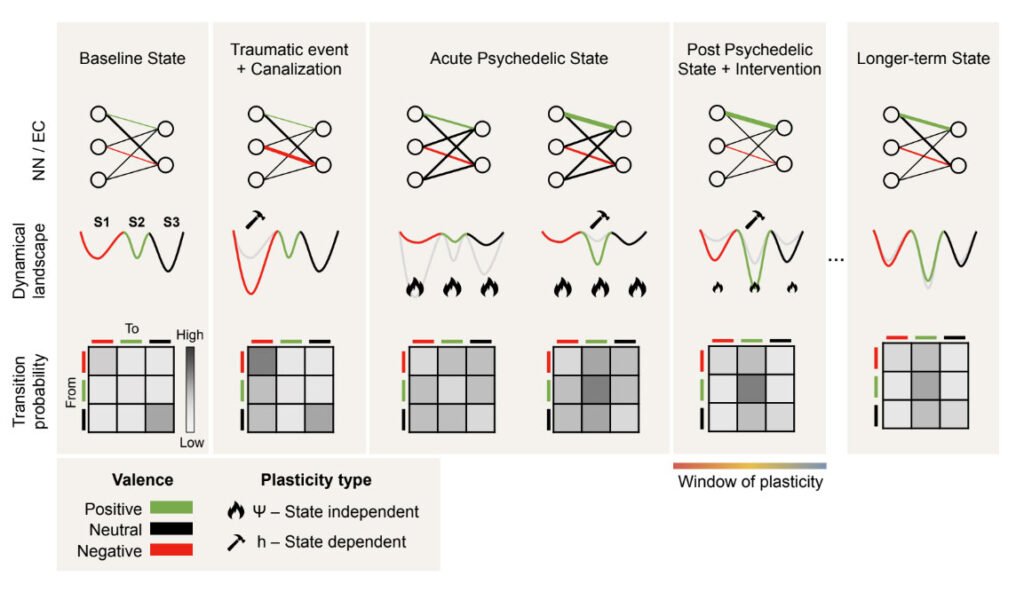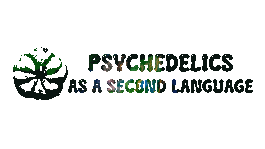Are Psychedelics causing wormholes in the brain?
Recent research from Beckley Research, the College of London, the University of Sussex, the University of Oxford, and the University of California on a new theory on how psychedelics may affect the brain by balancing between sympathetic and vagal activity brought many new ways to study the intersection between these compounds, brain dynamics, and plasticity.
In this article, we will be covering a groundbreaking concept, Neural Geometrodynamics, which could allow us to understand the brain and the effects of psychedelics better. A novel concept brought to us by Giulio Ruffini, Edmundo Lopez-Sola, Jakub Vohryzek, and Roser Sanchez-Todo from Brain Modeling Department, Neuroelectrics, Barcelona, Computational Neuroscience Group, Universitat Pompeu Fabra, Barcelona, and Center for Eudaimonia and Human Flourishing, Linacre College, University of Oxford. The theory aims to understand the brain’s complexities by transcending traditional views of neural function, proposing a dynamic interplay between the brain’s structure and operations, akin to the relationship between spacetime and matter in general relativity.
This concept explores how matter influences the curvature of spacetime, revealing an intricate relationship between neural activity and the brain. Brain states are shaped by existing neural connections, which modify neural connectivity through plasticity. Such analogy provides a compelling framework to understand brain operations, painting a picture where everything from emotions to thoughts and experiences may bend and shape the neural landscape.
The team formalized essential mathematical concepts to understand neural dynamics, particularly focusing on brain states, plasticity, and metaplasticity displayed in the following image:

By analyzing the image, we can understand the different timescales on which these processes operate: brain states fluctuate rapidly, plastic changes in brain connectivity happen slower, and metaplasticity (changes in plasticity) evolves over an even longer duration.
This stratified temporal framework offers an in-depth perspective on the adaptive mechanism of the brain.
In the Neural Geometrodynamics (NGD) framework, two forms of plasticity are identified: state-dependent and state-independent.
- State-dependent plasticity depends on the current state of the brain, similar to the mechanisms in Hebbian plasticity, which are vital for learning processes. This state adapts to the brain’s ongoing activities and experiences.
- State-independent plasticity functions independently of the brain’s current state, offering a unique mode of neural adaptation that doesn’t directly hinge on immediate neural activities or experiences.

But what does this have to do with psychedelics, and how does this even impact our understanding of these compounds in the brain, you may ask?
As mentioned at the start of this article, psychedelics are currently gaining attention in neuroscience due to their influence on brain dynamics. Compounds such as LSD and Psilocybin are getting recognition for their ability to catalyze significant changes in neural functioning.
One of the characteristics that stand out the most when observing the effects of these compounds on brain activity is its heightened neural entropy, which leads to increased complexity in brain activity. This ‘landscape flattening’ effect reduces the hierarchical structures of the brain, making the neural environment more homogenous and less constrained.
Such a process is elucidated by the REBUS model presented by Carhart-Harris, Robin L., and Karl J. Friston. The REBUS model suggests that psychedelics can disrupt the predictive coding of the brain and entrenched belief system. This temporary relaxation of cognitive patterns offers a window for mental exploration and therapeutic intervention, thus hinting at new treatments for various mental health disorders during the period.
The Neural Geometrodynamics (NGD) framework concept is particularly relevant to understanding how psychedelics impact the brain, inducing state-independent plasticity during the peak phase, using the unique period of significant brain flexibility mentioned in the REBUS model.
If the concept turns out to be accurate, this can lead to a change in the exploration of a broader range of neural states and the formation of new neural pathways and attractors.
When the effects of psychedelics diminish, the brain gradually reverts to its baseline state. Yet, it retains changes from new connections formed in its heightened state of plasticity. This phase is a ‘window of enhanced plasticity’ where the brain remains more susceptible to internal and external influences, allowing long-lasting therapeutical effects.

Researchers accentuate a potential link between spacetime and neural dynamics by contemplating the possibility that psychedelics create new neural pathways akin to wormholes, bridging connections between usually distant brain regions. This possibility is significantly important when we observe conditions where brain dynamics are entrenched or stuck, for example, in patients with depression. The CANAL and deep CANAL frameworks provide insight into how these entrenched dynamics develop and persist in depressive states.
The Neural Gemetrodynamic framework emphasizes that psychedelics can disrupt such patterns, leading to profound changes in mental states. This disruption could be the key to understanding the potential therapeutic effects of psychedelics in mental health disorders.

The findings in this research may be a pivotal advance in our ongoing journal to understand the complex mechanisms of the human brain and psychedelics.
Neural Geometrodynamic framework was inspired by the interplay of spacetime and matter in general relativity to delve deep into the nuances of neural dynamics, complexity, and plasticity.
Despite how this concept allows us to understand more about the plasticity of psychedelics, it’s also to note that it also offers valuable insights for alterations in brain dynamics seen in treatments like Transcranial Magnetic Stimulation or Transcranial Electrical Stimulation.
As of now, the research is still in its baby steps. However, it could be a way to transform and pave a new way to how we explore our mental health and psychedelics.

